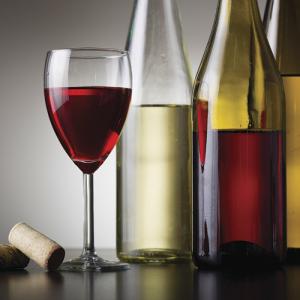Wow! It’s been a scorcher. When the weather gets hot, I get down with those tart white wines and an occasional chardonnay. Who wants to cook outdoors in this hot, steamy weather? Keep it light and air-conditioned for me. Let’s jump into this week with an Italian blend of Verdicchio and Vermentino from an Umbrian winemaker named Falesco Vitiano Bianco. Pale greenish-tinged with citrus and nectarine aromas balanced with a pleasing mineral acidity. This Bianco finishes cleanly. Drink it well chilled with linguine and garlic clam sauce, and for goodness’ sake use fresh middle neck clams. Good QPR when priced under $10, 89 McD. I’m reminded, I haven’t written much lately about either Verdicchio or Vermentino. Need to remedy that. Fish bottle anyone?
Here are two from Kim Crawford. Small Parcels Spitfire Sauvignon Blanc 2014 gets 88 points McD. These are new release. Pale yellow-colored; a bit herbal in the olfactory but this is saved by a redolent lemon pie and caramel burst of aromas. On the palate, tropical fruit and spicy, peppery herbal flavors ride a well-structured, dry, proper acid frame.
Add 1 price point under $19. Before continuing let me digress. RRs know I have railed against the practice of parcel designation, SP, or “Single Vineyard, row 6, vine 33” marketing ploys when used to raise prices. Crawford, which is Trumpian in its hugeness, may be going there. I will admit that the Spitfire and SP Wild Grace Hawke’s Bay Chard 2014 were fairly priced buys. The Chard is straw colored with peach, citrus, toast and hazelnut aromas. Ten months in oak has paid off and lees stirring adds a creamy mouthfeel. Melon, toasted smoky oak, vanilla and tropical fruit flavors ride a balanced acidic frame through to a clean, long, bright finish. An excellent buy, under $30 add 1 price point, 90 McD.
Fortunately one of my contacts provided a 2015 Akakies Kir-Yianni Rosé. These are from Amyndeon, in Macedonia, the only Grecian AOC for Rosé. The wine is made of 100 percent Xinomavro, a varietal wine indigenous to the region. Color is produced using two techniques: skin contact and the Saignee method, which is common to Rosé production and in need of definition. Saignee involves bleeding off red wine after only a short period of skin contact.
Red wine is derived from pigments in the grape skins; the resulting juice is a light or bright pink, not red. Saignee process is the method by which most Rosé wines are made. The exception is Champagne where Rosé may occur through blending red and white wines before the secondary fermentation. Most top still Rosé wines employ the Saignee method. Akakies ages its Rosé sur lie with stirring (battonage) for three months. As you know, this imparts a creamy mouthfeel and softens the acid bite. Don’t overchill; 45 degrees is about right to allow the strawberry and floral aromas to be unleashed. The wine needs these aromas for balance. Try with a roasted chicken sliced over a bed of greens with a ripe avocado half.
Last but far from least is Frank Family Carneros Chardonnay 2014. These come from the “cooler region” of Napa. I am having a love affair with their wine lately because they are still a value buy when most Napa wines are pricing themselves out.
The Carneros Chardonnay is treated like a queen, and it shows. At $32 or so it deserves 91 points. Oak aging provides pale straw golden color to this big old-style Napa Chard. It opens fruit forward and evolves to floral notes, honeysuckle, pear, and apple blossoms. Close your eyes, take a big snort and see if you can discern them. Look for lemon zest and vanilla also. On the palate, things get complex. Butterscotch, roast nuts, tropical fruit, maybe a little croissant.
These are supported with proper acidity and body. It closes with a fanfare of creamy mouthfeel, almond, caramel and palate-cleansing acidity. This compares well with most $50–60 Napa Chards. They will cellar and improve, so if possible buy a case.
Two final notes: Abacela, that lovely Oregon winery I mentioned in April, took two double golds at San Fran.
Concours Mondial de Bruxelles, a prestigious competition of over 8,000 wines, discovered two medal-winning wines were doctored. After the medals were awarded, the wines were being sold in stores. The cowardly director of Mondial, Thomas Costenoble, wouldn’t release the names. On his lawyer’s advice, dontcha know. Thanks to W. Blake Gray for the discovery article.























































